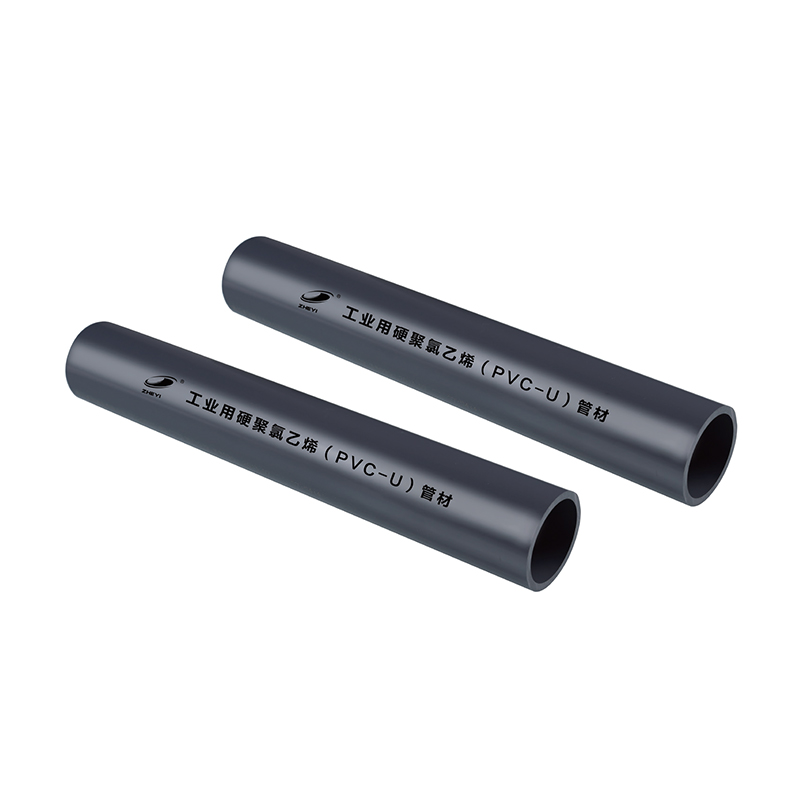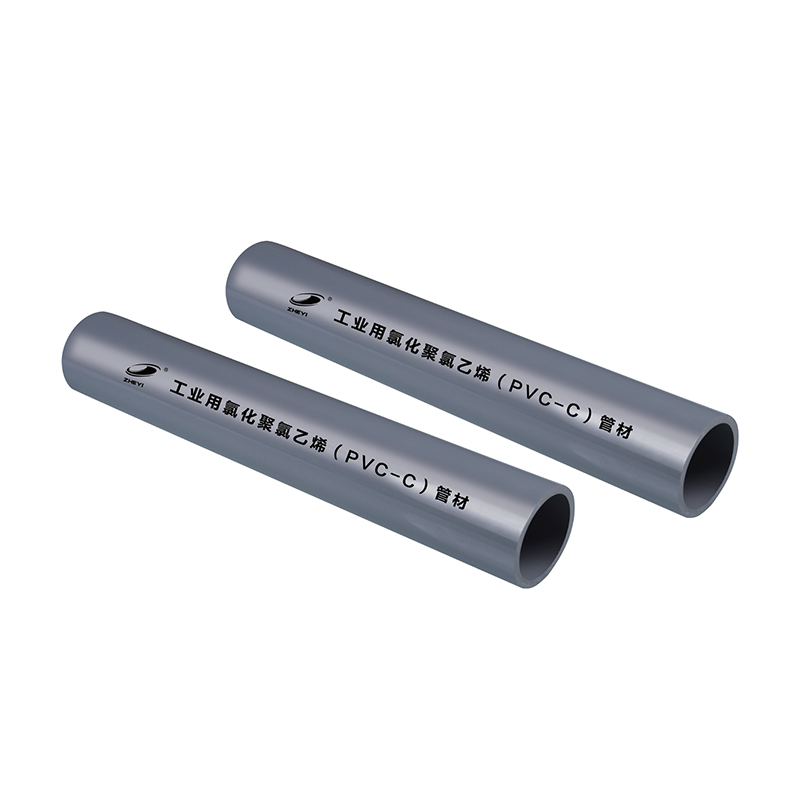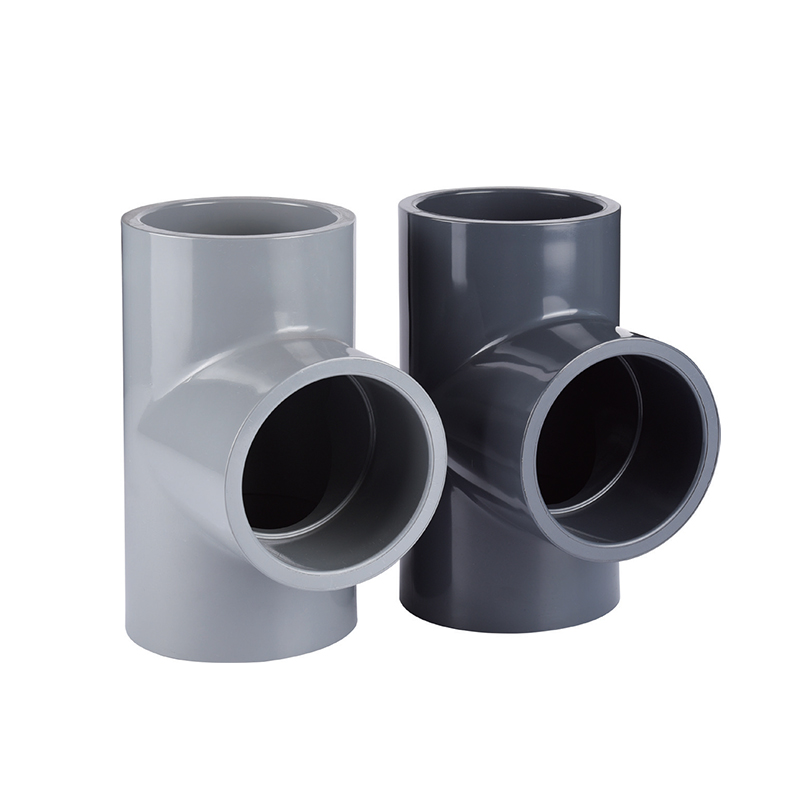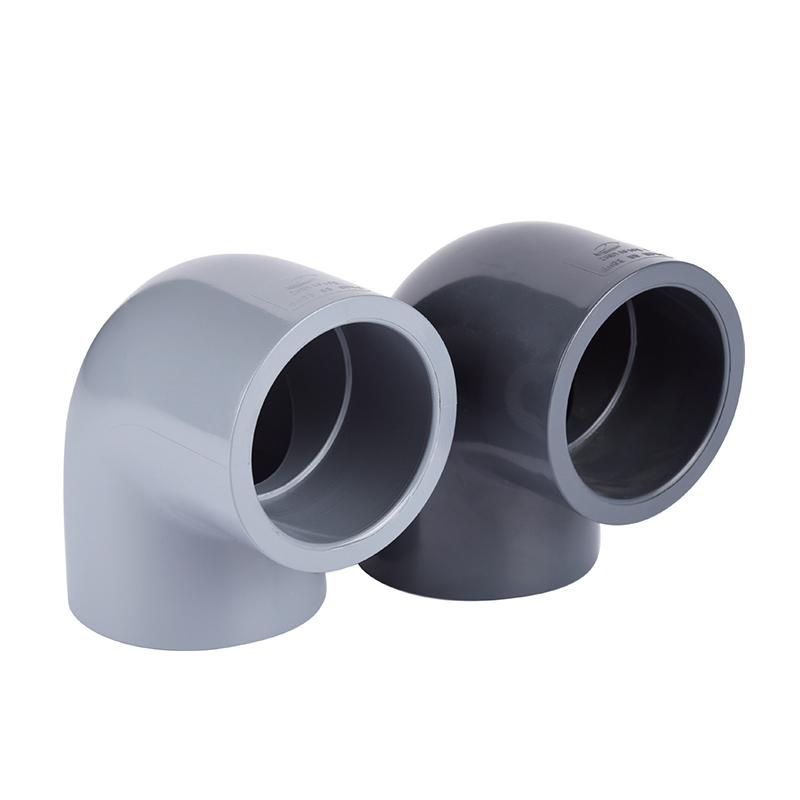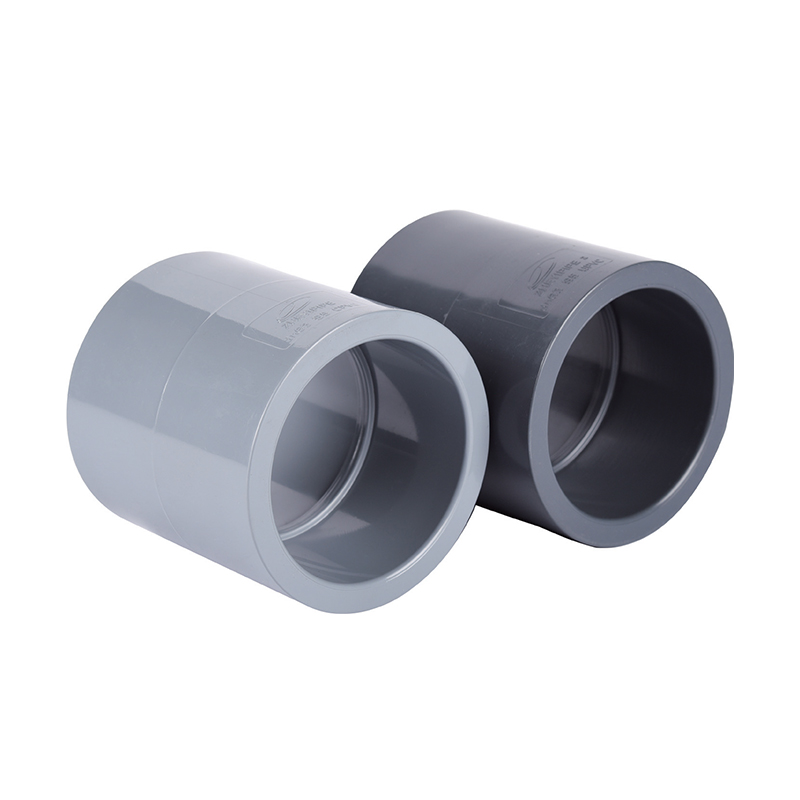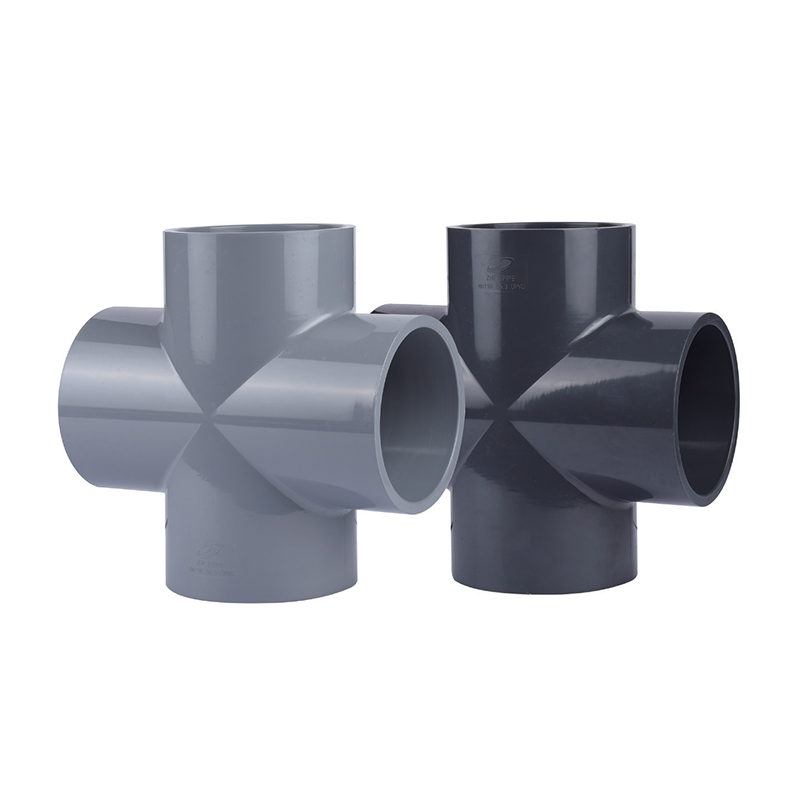UPVC (Unplasticized Polyvinyl Chloride) is an indispensable material in modern industry, thanks to its unique physical and chemical advantages. UPVC Valves serve as critical components in fluid control systems, acting not just as simple switches but as the foundation for durable, efficient, and long-lasting performance.
Choosing UPVC valves means investing in a solution that can withstand harsh environments. Compared to traditional metal valves, UPVC valves offer superior performance in several key areas, making them the preferred choice for building reliable fluid systems.
| Characteristic |
UPVC Valves |
Traditional Metal Valves (Cast Iron/Stainless Steel) |
| Corrosion Resistance |
Excellent. Resists most acids, alkalis, salts, and chemical solutions. No rust or corrosion. |
Varies from poor to good. Cast iron rusts easily; stainless steel is resistant but has limits with certain chemicals. |
| Weight |
Lightweight. Approximately 1/5 the weight of metal valves, simplifying transport, installation, and maintenance. |
Heavy. Requires more robust support structures and more labor for installation. |
| Cost |
Lower. Manufacturing and material costs are generally lower than stainless steel and other metals. |
Higher. Especially for high-quality stainless steel valves. |
| Maintenance |
Low. The durable nature of UPVC requires minimal maintenance, mainly simple inspections. |
High. May require regular rust removal, lubrication, or seal replacement. |
| Thermal Conductivity |
Poor. Excellent insulator, helps maintain fluid temperature and reduces condensation risk. |
Strong. Easily conducts heat, may require additional insulation. |
| Service Life |
Long. Can last for decades under proper conditions with stable performance. |
Variable. May be shortened by corrosion or wear. |
What Are UPVC Valves?
UPVC stands for Unplasticized Polyvinyl Chloride, a rigid plastic that contains no plasticizers. This "unplasticized" nature provides UPVC with excellent structural stability and strength, making it more durable and chemical-resistant than standard PVC. UPVC Valves are fluid control devices made from this material.
Material Properties and Core Advantages
The unique properties of UPVC material are what make its valves so effective:
- Lightweight and High Strength: UPVC's low density makes the valves easy to handle and install, significantly reducing labor and cost. At the same time, it possesses sufficient mechanical strength to withstand normal pipeline pressures.
- Chemical Corrosion Resistance: This is a key advantage. UPVC resists attack from acids, alkalis, and salts, and it won't rust like metal, making it ideal for the chemical, water treatment, and plating industries.
- Thermal and Electrical Insulation: UPVC is a poor conductor of heat and electricity, which helps maintain fluid temperature and reduces the risk of condensation.
Main Types and Operating Principles
To meet different application needs, UPVC Valves come in various designs:
- UPVC Ball Valve:
- Structure: Contains a perforated ball inside.
- Principle: A 90-degree turn of the handle aligns the ball's bore with the pipe (full open) or turns it perpendicular (closed).
- Features: Provides a tight seal and fast on/off control, ideal for quick shutoff applications.
- UPVC Butterfly Valve:
- Structure: Features a central rotating disc.
- Principle: The disc rotates to control flow. When parallel to the pipe, it's fully open; when perpendicular, it's closed.
- Features: Best for large-diameter pipes and flow regulation.
- UPVC Check Valve:
- Structure: Has an internal disc that opens or closes automatically.
- Principle: Allows fluid to flow in only one direction. It opens with forward flow and closes automatically to prevent backflow.
- Features: Acts as a safety device to protect pumps and sensitive equipment from fluid reversal.
UPVC Valves are the foundation of durable and efficient fluid control systems. In an era demanding higher performance and greater reliability, UPVC valves have emerged as a cornerstone solution, outperforming traditional materials in key areas. This status is built on a combination of exceptional corrosion resistance, high durability, and a lightweight design.
Unmatched Corrosion Resistance
In industrial settings where corrosive fluids are common, metal valves are at constant risk of degradation. UPVC Valves offer a robust defense. Their inert nature means they do not react with most acids, bases, or salts, ensuring fluid integrity and valve longevity. This resistance makes them a safer and more reliable choice for critical applications.
Exceptional Durability and Longevity
UPVC Valves are built to last. They have a rigid structure that withstands the stresses of continuous operation without cracking or deforming. Unlike metal valves that can weaken from corrosion, UPVC valves maintain their strength and sealing capabilities for decades. This durability leads to a longer service life and significantly lower maintenance costs.
Lightweight Design for Simplified Operation
The lightweight nature of UPVC Valves simplifies both installation and daily use. A heavy metal valve requires more personnel and equipment, increasing project complexity and cost. In contrast, UPVC valves can often be handled by one person, making installation quicker, safer, and more cost-effective.
| Performance Characteristic |
UPVC Valves |
Traditional Metal Valves |
| Chemical Compatibility |
Excellent. No reaction with most acids, alkalis, and chemicals. No risk of corrosion. |
Poor. Susceptible to corrosion from specific chemicals; requires careful material selection. |
| Durability & Lifespan |
Excellent. Stable structure, long lifespan, low maintenance. |
Variable. Affected by corrosion and wear, lifespan depends on maintenance. |
| Weight |
Light. Greatly simplifies handling, installation, and maintenance. |
Heavy. Requires more labor and equipment; adds load to the system. |
| Installation Ease |
High. Can be connected with simple solvent cement or flanges, no welding required. |
Low. Often requires welding or complex flange connections, making installation difficult. |
| Sealing Performance |
Reliable. UPVC materials and rubber seals provide a lasting, effective seal. |
Good. But can fail due to corrosion or aging. |

SCH8O/DIN UPVC/CPVC Swing Check Valve
How to Choose the Right UPVC Valves
Choosing the right UPVC Valves is crucial for ensuring the long-term stability and efficiency of a fluid control system. An incorrect choice can lead to leaks and premature failure. To make the best decision, consider the following key factors.
Key Considerations
- Fluid Type: This is the most important factor. While UPVC is highly resistant, it's essential to confirm its chemical compatibility with the specific fluid being handled, whether it's an acid, alkali, or ultra-pure water.
- Working Pressure and Temperature: Each UPVC valve has a rated pressure and temperature range. Exceeding these limits can cause failure. The selected valve's ratings must exceed the system's maximum operating conditions.
- Flow Rate and Velocity: The system's flow requirements determine the appropriate valve size and type. High-flow, low-pressure systems may be better suited for a butterfly valve, while systems needing precise control may require a ball valve.
- Operating Frequency: For applications requiring frequent opening and closing, choose a valve with a handle or actuator designed for higher durability.
Analysis of Common Types and Applications
Understanding different types of UPVC Valves is the foundation for making the correct choice.
- UPVC Ball Valve:
- Function: Primarily used for quick, complete shutoff or connection of fluid flow.
- Applications: Ideal for industrial water treatment, drinking water systems, and managing specific acid and alkali pipelines.
- UPVC Butterfly Valve:
- Function: Used for opening, closing, and regulating fluid flow.
- Applications: Commonly used in large-diameter pipelines for chemical processes, industrial wastewater, and metallurgy.
- UPVC Check Valve:
- Function: Prevents fluid from flowing backward.
- Applications: Critical for protecting pumps and sensitive equipment in systems where backflow must be avoided, such as in water treatment plants and chemical facilities.
| Characteristic |
Ball Valve |
Butterfly Valve |
Check Valve |
| Main Function |
Quick on/off, flow shutoff |
Flow regulation, throttling, on/off |
Prevents backflow |
| Applicable Caliber |
Small to medium |
Medium to large |
All calibers |
| Flow Regulation |
Poor; designed for full open/close |
Good; can be used for flow regulation |
None; for one-way flow only |
| Operation Method |
90° rotation via handle or actuator |
90° rotation via handle or actuator |
Automatic opening/closing |
Making the right choice requires professional knowledge. Zheyi Pipeline (Wuhan) Co., Ltd., a high-tech enterprise specializing in UPVC industrial pipelines, can provide expert consultation to help you select the most suitable UPVC Valves for your specific needs, based on their extensive experience in various industries.
Ensuring the Performance of UPVC Valves Through Installation and Maintenance
The exceptional performance of UPVC Valves is not a given; it relies on correct installation and regular maintenance. Even the highest-quality UPVC valve can fail prematurely if improperly installed or neglected.
Proper Installation Procedures
UPVC valve installation is relatively simple, but proper steps must be followed:
- Preparation: Before installation, check all components for cleanliness and damage. Remove protective covers and ensure the valve operates smoothly.
- Solvent Cementing: For valves that use solvent cementing, clean the pipe and valve ends. Apply solvent cement evenly and quickly insert the pipe, holding it firmly for a few seconds.
- Flange Connections: For flanged valves, ensure the flange faces are flat and perpendicular. Use a suitable gasket and tighten bolts in a diagonal pattern to ensure even pressure.
- Support and Anchoring: Despite their light weight, provide necessary pipe supports on both sides of the valve to prevent excessive stress.
Routine Inspection and Maintenance
Regular maintenance is key to extending the life of UPVC Valves:
- Visual Inspection: Periodically check the valve body for cracks, deformation, or discoloration. Check for leaks at connections.
- Operational Check: Manually operate the valve to ensure smooth, non-sticking movement.
- Seal Maintenance: Seals (O-rings, seats) are critical. If minor leaks occur, replacing the seals can restore performance.
- Cleaning: Periodically clean the valve's interior to prevent buildup that could affect operation.
| Maintenance Strategy |
Advantages |
Disadvantages |
Preventive Maintenance
(Regular inspection) |
Low cost, extends valve life, finds problems early. |
Requires time and labor; may not prevent all sudden failures. |
Corrective Maintenance
(Repair after failure) |
Low initial investment; only performed when a problem occurs. |
Failure can cause system downtime; high repair costs; may require full valve replacement. |


 +86-15258772971
+86-15258772971
 dinys009@163.com
dinys009@163.com

 English
English 한국어
한국어 Español
Español عربى
عربى


